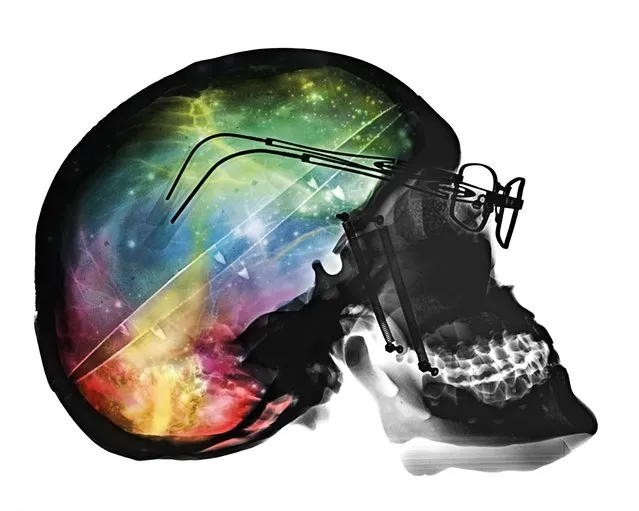
These stunning coloured images show detailed x-ray images of everything from skulls to light bulbs. Artist Paula Fontaine, from Westminster Massachusetts, created the images using a process called digital map painting. To create the images the x-ray emission source – the head of the machine on an arm which focuses the beam – is placed over the object. Paula then retreats behind a shielded screen before activating the x-ray exposure. Here: Brain storm, conceptual composite X-ray. (Photo by Paula Fontaine/Barcroft Media)
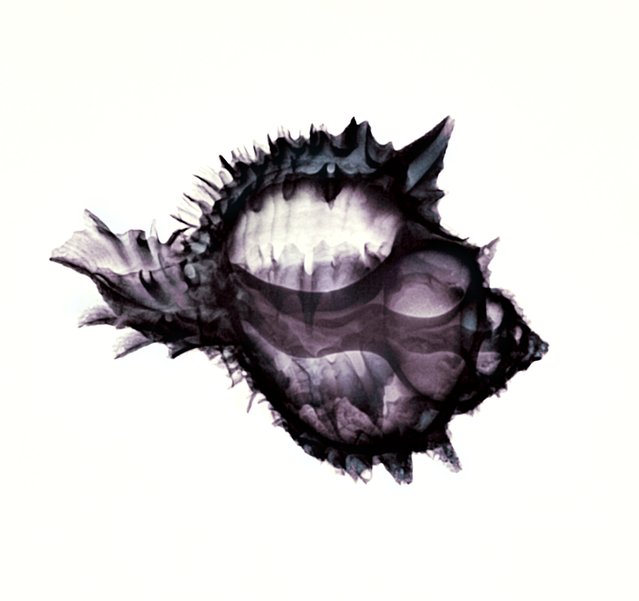
Shell, coloured X-ray. (Photo by Paula Fontaine/Barcroft Media)
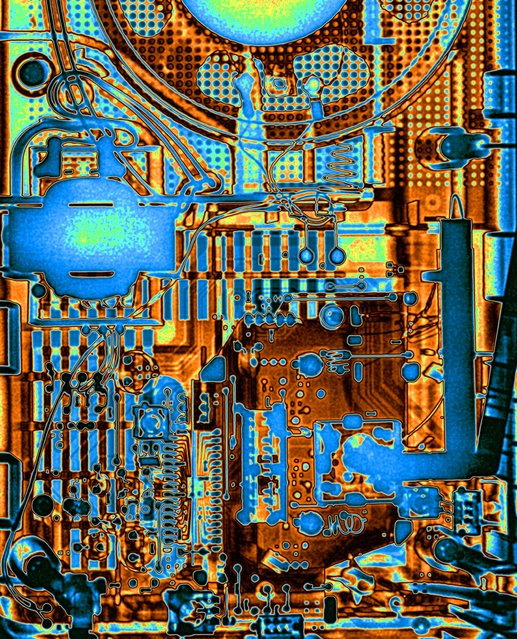
Radio circuit board, coloured X-ray. (Photo by Paula Fontaine/Barcroft Media)
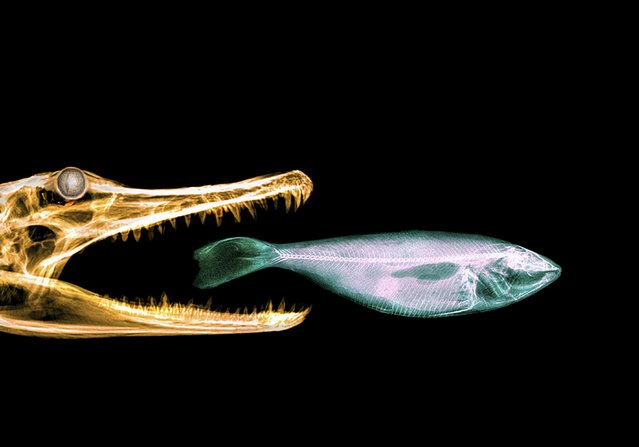
A Crocodilian eats a fish in this coloured X-ray. (Photo by Paula Fontaine/Barcroft Media)
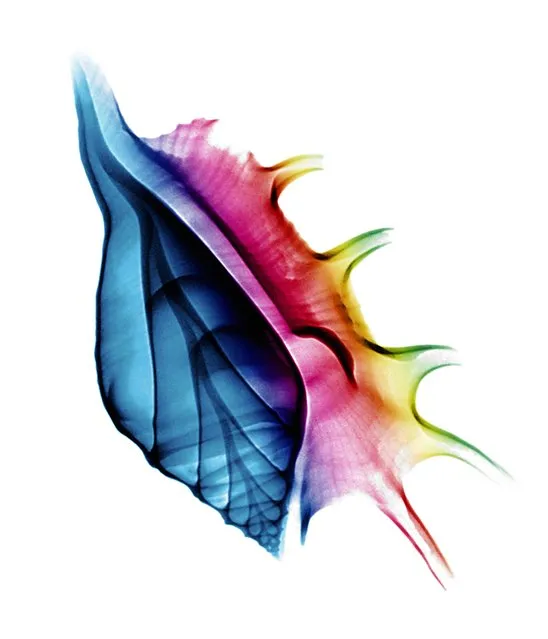
A coloured X-ray of a seashell. (Photo by Paula Fontaine/Barcroft Media)
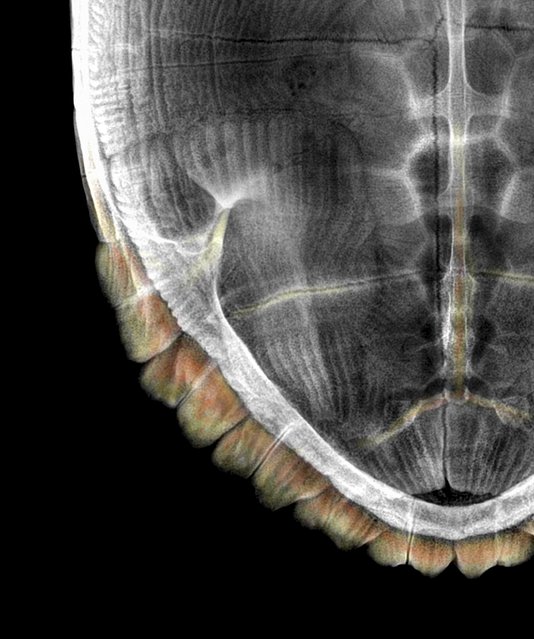
Turtle shell, coloured X-ray. (Photo by Paula Fontaine/Barcroft Media)
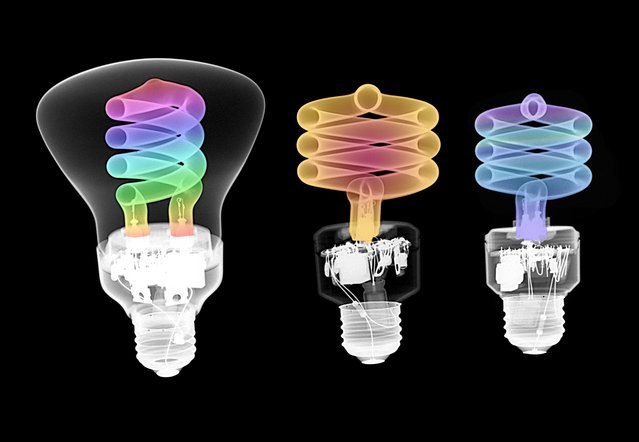
Energy-saving light bulbs, coloured X-ray. (Photo by Paula Fontaine/Barcroft Media)
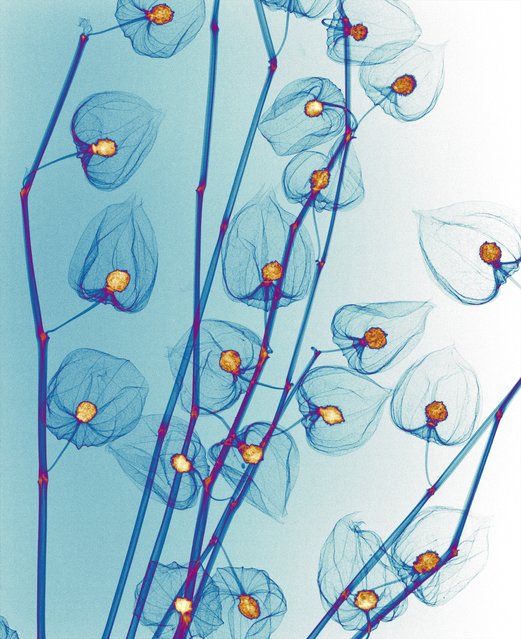
Garland of lights designed to look like Japanese lantern flowers, coloured X-ray. (Photo by Paula Fontaine/Barcroft Media)
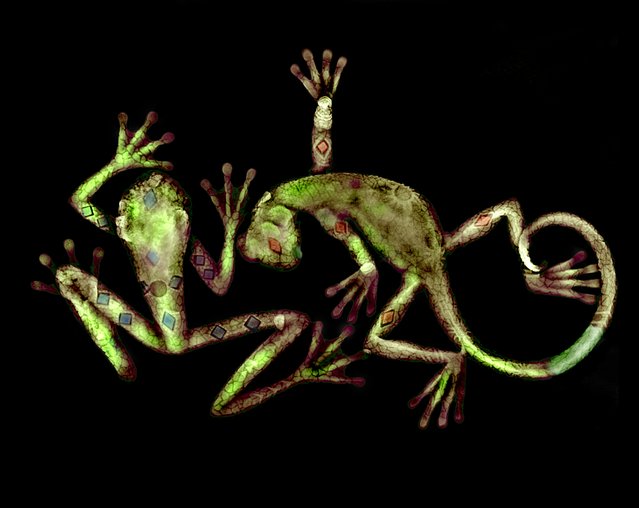
Lizard and frog, coloured X-ray. (Photo by Paula Fontaine/Barcroft Media)
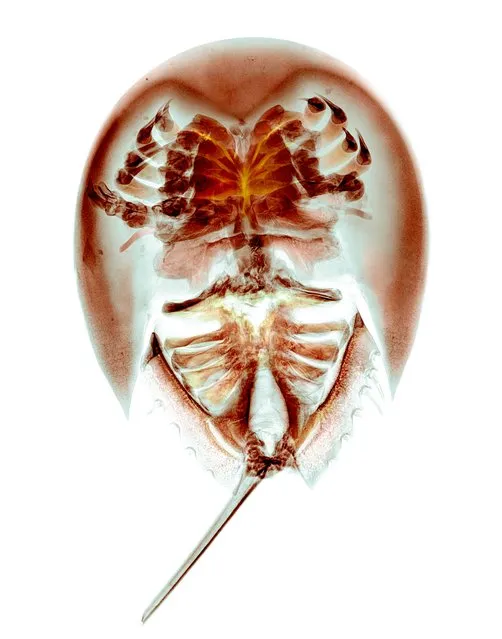
Coloured X-ray of the carapace of a horseshoe crab (family Limulidae). Despite its name this animal is not closely related to true crabs, instead being closer to the spiders. It has remained essentially unchanged for the last 500 million years, and is considered to be a “living fossil”. (Photo by Paula Fontaine/Barcroft Media)
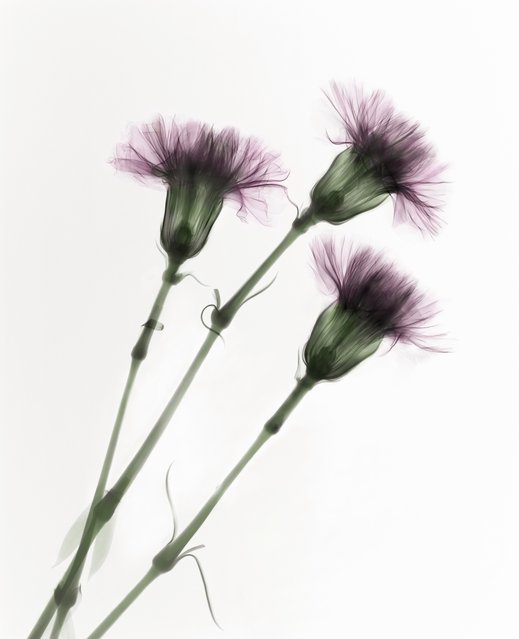
Carnations (Dianthus sp.), coloured X-ray. (Photo by Paula Fontaine/Barcroft Media)
27 Mar 2015 13:34:00,
post received
0 comments
